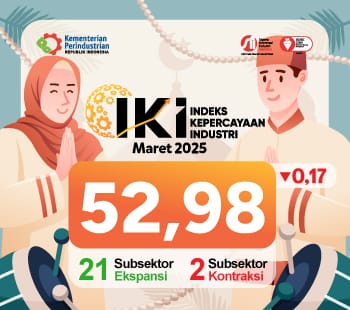CIO Insights 2Q22 Summary: Anchor in the Storm
By : Nata Kesuma | Friday, April 15 2022 - 20:30 IWST

PT Bank DBS Indonesia
INDUSTRY.co.id - Jakarta, 15 April 2022 - Amid the upheaval from the Russia-Ukraine conflict, alongside worries over the impact of surging oil price on inflation and the Fed’s policy response, many clients are asking if they should just liquidate their portfolios and hold cash. For sure, market sentiment is never positive in any outbreak of a military conflict.
Although raising cash may mitigate the downside risk for a while, holding a substantial amount of cash is no antidote as rising inflation will only erode its purchasing power over time. We advocate for portfolios to stay engaged and anchored in the best-in-class companies.
Despite the impact of oil on inflation and the increasing risk of stagflation, economic recovery from the post-pandemic reopening of economies is supportive of staying invested. Continue to employ our barbell approach with secular growth equities and income-generating assets, and add gold as a risk diversifier.
In this edition of CIO Insights, we look at the potential of Growth Capital in the Private Equity space, and highlight Healthcare as a growth sector with defensive characteristics.
2Q22 Top Five Investment Takeaways Anchor in the Storm
Alongside worries over the impact of surging oil prices as inflation rises, and the Federal Reserve’s policy response amid upheaval from the Russia-Ukraine crisis, market sentiment is weak. Although holding cash may mitigate downside risk for a while, holding a substantial amount of cash will only erode purchasing power over time and lead to missing opportunities that heightened market volatility presents as inflation climbs to a 30-year high.
It is paramount for portfolios to be anchored in best-in-class securities amid geopolitical instability and inflation concerns. We advocate investors maintain rationality and focus on diversification despite prevailing risk-off sentiment. Employ the DBS Chief Investment Office (CIO) barbell approach that holds secular growth equities on end and income generating assets on the other. Additionally, include gold as a risk diversifier. Despite the impact of high oil prices and the growing risk of stagflation (where inflation is strong while growth is weak), economic recovery from the reopening of economies is supportive of steady macro momentum.
We adjust our strategies in 2Q22 to tap on the risks and opportunities that have been presented.
1. Equities: Downgrade Europe to Underweight, upgrade Asia ex-Japan to Overweight
With the latest development in Ukraine, we downgrade our Overweight call on Europe to Underweight given that:
a. Europe has huge dependencies on Russia and Ukraine for its energy needs and the ongoing crisis will result in potential disruption
b. Europe is a net importer of energy; the surge in energy prices will weigh on the profitability of European companies with high energy consumption
In contrast, we have become more sanguine on the outlook of Asia ex-Japan (AxJ) equities for the coming quarter given:
a. On a forward P/E basis, the AxJ region has de-rated substantially since early 2021 and is currently trading at an attractive discount of 18.7% to global equities
b. Selected commodity plays in ASEAN will benefit from rising commodity/energy prices and the heavy-weight banking sector will benefit from rising interest rates
c. We are turning positive on China equities as Liu He, one of the Vice Premiers of the People's Republic of China and the director of the Office serving the Central Financial and Economic Affairs Commission, recently announced that "substantial measures" will be taken to stabilise markets. This is seen as a major catalyst for policy support measures to come through, decisively drawing a line in the sand on the 12-month downtrend in China stocks.
2. Upgrading China
Driven by the improved outlook for China, we upgrade our three-month call on AxJ equities to Overweight from Underweight . Following the government’s pledge to undertake fiscal measures to support the economy and the market, we expect supportive policy measures to come through, which will ease market instability and lift sentiments surrounding China equities. Measures to alleviate the concerns in their respective areas include:
a. Property developer sector: government measures to alleviate debt issues, restoring confidence in the sector, supporting property sales and property financing
b. Internet, New Economy, and “common prosperity” affected sectors: swift introduction of the remaining measures to establish standard and transparent regulation, eliminating the uncertainty overhang
c. US American Depository Receipts delisting issue: bilateral discussions with US authorities to resolve audit and delisting issues so that companies may retain their US listings
d. Commitment to spur loan growth and the expansion of the domestic economy
e. Gradual adjustment of China’s Covid-zero policy to minimise the impact on the economy leading to fewer lockdowns and disruption of activities, improving consumption and alleviation of supply chain bottlenecks
3. Underweight Fixed Income - We see seven US Fed hikes in 2022, and another four hikes in 2023
The key issue dogging central banks is still uncomfortably high inflation prints. In the US, we see seven hikes in 2022 and another four in 2023. Risks to this view are to the upside. The inflation backdrop is likely to worsen as commodity prices surge. However, growth in the US should not be materially affected. Rate hikes could be more aggressive with back-to-back or 50 bps hikes looking plausible in the initial phase of policy tightening. Against this backdrop, we maintain our flattening view on the UST curve.
We see neutral 10Y US yields in the 2.7-2.8% range.
We think that the European Central Bank could be more cautious on rate hikes as there could be spill over from the Russia-Ukraine crisis on the economy. We have pencilled in modest hikes in 1H23. Tightening by the Bank of Japan appears unlikely.
Among credit, we prefer Developed Market (DM) to Emerging Market (EM) corporates; favour 5Y duration credit. As the yield curve flattens, we expect higher grade bonds to outperform the riskier ones in the coming quarter and this underpins our preference for DM Corporates bonds to EM bonds. Indeed, global Investment Grade (IG) bonds are starting to look attractive after recent spreads widening and we advocate investors to go for quality. With a yield of 2.6%, IG credit is a good alternative to cash.
Duration-wise, we favour the 5Y bucket despite the rising rates environment which would typically compel investors to shorten duration and reduce portfolio sensitivity to bond yields. However, in the current market cycle, the rise in bond yields is accompanied by healthy growth momentum and our analysis shows that the 5-7Y segment historically generates higher returns than the 1-3Y segment.
4. Diversify with Alternatives (Overweight)
We recommend an Overweight position in Alternatives as an asset class; we favour private equity, private debt, hedge funds, and gold for their low correlation with public markets.
a)Gold as a stagflation hedge in play; raising gold price forecast to USD2,200
Following the spike in gold price above our target, we believe there are strong tailwinds to drive its price higher. We are thus raising our year-end gold price forecast to USD2,200.
The Russia-Ukraine crisis has been a tipping point. As oil and commodities spike towards historical highs due to fear of supply disruption, inflation expectations grow and stay elevated. As a result, the growing risk of an economic contraction cannot be ruled out.
The crisis also leads to a drop in confidence levels, affecting investment and consumption, causing trade contraction and financial market volatility, heightening recessionary risks. Fed hikes and tightened liquidity to combat rising inflation could be seen as policy mistakes that could tilt the world into recession.
We believe investment demand for gold will continue to stay strong as demand for portfolio hedges rise. Gold, with its uncorrelated attributes and strong liquidity, should prove useful in portfolios as risk diversifiers.
b)Private Equity – Growth Capital
While buyouts have been the traditional focus of Private Equity (PE), the hunt for value creation opportunities, combined with a business climate of positive disruption and transformation, has brought growth capital strategies into focus.
In addition to diversification merits and returns exceeding that of listed equity investments, investors in growth capital also stand to benefit from having access to a wider investment universe and exposure to growth sectors.
Potentially attractive returns with a modest loss ratio, growth capital offers a distinct risk-reward profile at the intersection of venture capital and buyout investments. Typically, growth capital target companies include those:
Which have established, cash generating businesses and are opting to stay private for longer
That tend to be in fast-growing sectors which expand more rapidly than the broader economy
When selecting a growth capital fund to invest in, investors would do well to consider the following attributes of the fund managers:
Resourceful and well-connected
Possess core competencies to complement the expansion needs of businesses
Demonstrate strong track record
Have sufficient scale
5. Stay invested in Global Healthcare — Orphan drugs: a new frontier to recurrent income Generation
The Healthcare sector accounts for c.15% of the global equities benchmark and demonstrates stable and secular growth characteristics. This quarter, we deep dive into the orphan drug subsector and how pharmaceutical firms benefit from this important development.
Orphan drugs are drugs that can treat rare diseases; their development is supported by government funding and regulations like the Orphan Drug Act of 1983 in the US.
With some 7,000 rare diseases impacting 400m people globally and counting, orphan drugs are playing increasingly important roles in saving lives. Since the early 80’s, the number of orphan drugs designations granted by the US Food and Drug Administration has been on the rise, with some becoming mainstream cures for rare diseases.
Other driving factors include the emergence of rare diseases and the dire need to treat them where existing remedies fall short, as well as technological advancement in the development of such cures. For example, the use of gene sequencing, antisense therapy (to treat neurodegenerative and neuromuscular disorders), and data analytics have played an important role in the discovery of new types of orphan drugs.
Backed by more advanced research and development capabilities, credible track record, large pool of proven data, capacity for large-scale clinical trials, and superior financial resources, large healthcare firms will remain at the forefront of identifying new solutions, dominating the pole positions in orphan drug development.
Read Also
FAB to Provide Over AED500 Billion (USD135 Billion) in Green Finance…
CTBC Supports Taiwanese Employees to Go Overseas
Rakuten Card’s Systems Development Subsidiary in Vietnam Relocates…
Increase in New Loan Disbursement Drives Growth in KB Bukopin's Interest…
PermataBank Holds Annual General Meeting of Shareholders 2023 and…
Today's Industry

Senin, 09 Juni 2025 - 14:22 WIB
Savyavasa and Permata Bank Launch Exclusive Foreign Mortgage Program
Savyavasa, a luxury residential development by Swire Properties and JSI Group under PT Jantra Swarna Dipta, in collaboration with Permata Bank, presents a new solution for foreign nationals…

Rabu, 21 Mei 2025 - 10:09 WIB
Indonesia, Thailand Sign MoU on Health Sector, Focusing on Global Capacity, Collaboration
As a part of President Prabowo Subianto’s official visit to Thailand, both countries signed a Memorandum of Understanding (MoU) on health sector, in an effort to strengthen bilateral cooperation…

Rabu, 21 Mei 2025 - 10:06 WIB
Indonesia, Thailand Deepen Cooperation on Security, Trade, and Regional Stability
resident Prabowo Subianto has reaffirmed Indonesia’s strong commitment to deepening bilateral relations with Thailand during the meeting with Thailand’s Prime Minister Paetongtarn Shinawatra…

Selasa, 20 Mei 2025 - 12:44 WIB
Boediman Widjaja's Technology Ready to be Adopted in Jababeka Industrial Estate (KIJA)
In an exclusive seminar entitled "A Great Step: Boediman Widjaja Story - Going from Indonesia, Thriving in Singapore" held at the President Lounge, Menara Batavia, Boediman Widjaja, Founder…

Jumat, 02 Mei 2025 - 10:46 WIB
Binawan and Government Support Indonesian Nurses in Europe through Scholarships
In the midst of the viral #KaburAjaDulu hashtag as a symbol of the young generation's disappointment with domestic working conditions, Binawan responded with real action: dispatching Indonesian…

















News Comment